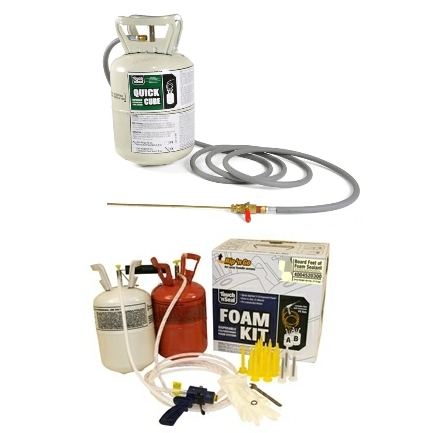
As the season of extreme temperatures gets closer, have you given any consideration as to how you can regulate the cost of energy? Applying spray foam insulation in the rooms that are poorly insulated, such as the basement, garage, and attic, dramatically reduces energy loss as well as the cost of energy. There are two different types of spray foam insulation that are ideal for different situations: 1 component spray foam, and 2-part spray foam. Having knowledge of the type of insulation you need helps speed up the process of sealing these costly air leaks.
1 Component Spray Foam
- Expansion Amount: 10% when applied at 1/2″ thickness
- Curing time: 20 minutes
- R-Value: 5.4 (per inch)
- Number of tanks: 1
As a result of this being a low expansion foam, 1 component spray foam is commonly used to seal air leaks around doors, windows, HVAC and electrical penetrations, plumbing, and other small-sized areas where leaks occur. The foam should be kept at room temperature. It cures when exposed to moisture, so if you are going to use this insulation on a cold or dry day, be sure to use a spritzer to assist with the curing process.
2 Part Spray Foam
- Expansion Amount: 30 times when applied at 1†thickness
- Curing Time: Within 1 minute
- R-Value: 7.12 per inch
- Number of tanks: 2
The high expansion 2 part spray foam is used to seal large-scale air leaks. It is commonly used to insulate walls, floors, and ceilings. This type of insulation has a higher R-value than 1 component spray foam, making it a more effective insulator. As with 1 part foam, the two tanks should be left at room temperature. Also note that the tanks are of different consistencies, and one tank needs to be warmed up to match the consistency of the other once you are ready for application.
Both 1 component spray foam and 2 part spray foam are closed cell, meaning the cells in the foam are packed closely together, instead of loosely. This provides the foam with strength and enables it to be water resistant, although not waterproof. All instructions regarding safety and application should be followed carefully. Regardless of the type that is necessary for your home, spray foam insulation seals air leaks and continues to save money on energy bills long after it has been used.
